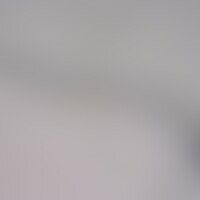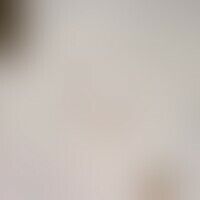Strongyloidose Images
Go to article Strongyloidose
Strongyloidose unter dem klinischen Bild der Larva recurrens

Strongyloidose: klinisches Bild eines länger bestehenden ausgeprägten Befundes

Strongyloidose: klinisches Bild der Larva currens. Eingekreist oben eine lineare Formation, unten flächig ekzematisiertes Areal.

Strongyloidose: geographische Verteilung (Abbildung entommen aus: Requena-Méndez A et al. 2017)


Strongyloidose: Nachweis rhabdtiformer Infektionslarven in der Mukosa des Dünndarms (Pfeile). Dichtes eosinophiles Infiltrat der Tunica propria (rot markiert). Entommen: New Engl. Journal

Strongyloidose: Rhabditiforme Larve von Strongyloides stercoralis. Nachweis durch Mikroskopie des Stuhls. Eier treten selten auf, da die Larven bereits im Darm schlüpfen. Die Larven sind hochinfektiös durch aktives Eindringen in die Haut. Ewa 17-20 Tage nach Infektion sind die Larven im Stuhl nachweisbar. Die Larven können zu Männchen, Weibchen der freilebenden Generation oder direkt zur invasionsfähigen (sogenannten filariformen) Larve differenzieren.

Strongyloidose: Larve von Strongyloides stercoralis (das Ende ist abgerissen).

Strongyloidose: Rhabditiforme (filariforme) Larve von Strongyloides stercoralis. Nachweis aus Stuhlmaterial.

Strongyloidose: Screeningalgorithmus (entommen aus Requena-Méndez A et al. 2017)